Creating a search engine optimisation strategy is vital when building a direct-to-consumer brand. SEO is the mechanism of improving your eCommerce content for Google to achieve organic traffic for your online store.
>Share this post<
by Irina Ciutaco
January 08, 2021
Direct-to-consumer eCommerce is a strategy in which classic B2B organisations are selling directly to end-consumers through their eCommerce website. Currently, 55% of consumers choose to acquire straight from the brand producer instead of retailers.
Creating a search engine optimisation strategy is vital when building a direct-to-consumer brand. SEO is the mechanism of improving your eCommerce content for Google to achieve organic traffic for your online store.
In today’s blog post, we offer tips for amplifying your D2C eCommerce strategy with SEO.
Creating a search engine optimisation strategy is vital when building a direct-to-consumer brand. SEO is the mechanism of improving your eCommerce content for Google to achieve organic traffic for your online store.
In today’s blog post, we offer tips for amplifying your D2C eCommerce strategy with SEO.
Why do D2C brands need SEO?
Your mission, as an owner of a D2C website, is not just to bring customers who are willing to convert, but mostly to magnify your brand awareness between your future customers who start their customer journey.
This implies that you should communicate with clients in various phases of the customer journey.
Therefore, your communications should be adapted to your prospects while your brand needs recommendations at an early stage of the process.
SEO was acknowledged by a recent audit as being in top two of the most important acquisition channels and in top one as an organic one for D2C brands.
Below, we have listed the four key elements for amplifying your D2C eCommerce strategy with SEO:
1.How to check the SEO metrics
The first thing that you should understand from a search engine optimisation strategy is how your website is performing organically. Using Google Analytics, you can search the direct traffic amount and the way it was executed on your website in comparison with the organic traffic.The best tool to check how your website is doing is Google Search Console.
Managing GSC, you can discover valuable information about your website: searmpressions, clicks, click-through rate and average ranking positions you have on Google Search Results Page for a typical search term. You are also able to do an inquiry in GSC and extract the information into Google Sheets. By using the Search Analytics for Sheets add-on, you will get access to data and build backups from GSC in Google Sheets.
Moreover, you will have access to data and create a copy from Google Search Console in Google Sheets.
How we can differentiate branded from non-branded keywords
Branded keywords are search queries that have your brand name in it and they are coming from people who have an idea about your website and are searching to know more information about it. They are coming from the current customers who should decide on purchasing an item.Non-branded searches come from people who don’t know about your website and are looking to get more information about your company and products.
Manage a Competitive Analysis
Furthermore, you should analyse your competitors. Using SEO tools like Semrush, Ahrefs, Moz or Ubersuggest, you can find important search data.
How to determine who your competitors are
Let’s play pretend and impersonate a marketing manager for a D2C eCommerce shop called Denverbike.com/en. Your purpose is improving brand awareness using an SEO strategy and running more organic traffic to your eCommerce shop.
Choose an SEO tool, for example, Ubersuggest and determine an analysis of your domain. Determine what your keywords are and click on ’’organic keywords’’.
Boost your SEO rates and be ahead of your competitors
Check your competitors data and then compare the information thanks to the four most important SEO metrics: organic keywords, organic search traffic, domain score and backlinks.
For example, comparing denverbikes.com with ribblecycles.co.uk, ribblecycles has a more extended keyword profile and volume of traffic coming from SEO.
In consequence, you will see how your SEO performance is compared to your competitors.
Discover the difference between branded and non-branded search
The following step is to extract the list containing the keywords that belong to your competitors and split them into branded and non-branded.
3.Map Keywords depending on the different moments of the customer journey.
Moreover, let’s focus on understanding what a buying process is and what are its stages. A buying process is the sum of a visitor’s footfalls in order to complete the acquisition of a product or service. The more new information becomes accessible, the more likely is that the buying process is to be growing.
We will enumerate the various steps of the customer journey:
- Brand awareness is the first step, where possible clients have the opportunity of exploring the importance of your brand.
- The second stage is the conversion, which shows how prospects can turn into customers who are paying.
- The third stage is relationship building, which shows how the brand will keep on delivering value to customers.
- The last one is the word-of-mouth stage shows how to influence the client to encourage your website to others.
If we focus on the difference between short and long-tail keywords, we should start by mapping them. First of all, short-tail keywords are in search terms that contain a couple of words. This keyword has a broader notion, a high search volume and a less clear intent.
Secondly, long-tail keywords have three or more words in their structure, making this type of keyword a unique search topic. Even if it has a lower search volume, the search intent is more precise and it has a click-through rate as Google is able to mix content with the search.
If we mix the notion of short-tail/long-tail keywords and one of non-branded/branded keywords, you can do a framework that features 4 phases of the customer journey.
Stage 4: Create a keyword list that targets each customer journey stage
First of all, begin with your current keywords. Get access to the branded keywords and sort them into short and long-tail keywords. Branded keywords are the keywords that don’t need the same name as the domain.Secondly, is to classify the non-branded keywords by relevance and search volume.
Thirdly, mark your competitors’ keywords: compatible non-branded keywords coming from your opponents are good objectives.
We recommend that you create content for these terms to emphasise the commonalities and differences that exist for products and your competitors.
Moreover, customer acquisition is the most essential step in your SEO strategy. For this reason, you should master the customer journey from your current customers and the value your products bring.
Lastly, you should get feedback from Google as it recommends keywords when you type something in the search box. These recommendations are according to the current search data.
A good place to check relevant keywords is under ‘’People also ask’’ section on Google SERP page.
In case you want to find more relevant keywords, you should check under ‘’People also ask’’ on the search result page. lnstead of stopping at the first step of questions that you see, you should click on any question in this group, because Google will show more queries related to the one that you have clicked on before.
Conclusion:
As we have seen from this blog post, creating a D2C eCommerce strategy using search engine optimization is not an easy task. Bear in mind that as a D2C brand, your brand is much more than an eCommerce website, it is also a channel where you can boost your brand and engage with your prospects.
More to explore
Here’s an overview of the latest improvements that are now available in the Kooomo platform.
In the next few years, we are foreseeing an impressive increase for the global retail industry. While this can be beneficial for the global eCommerce industry, it also means that there will be more competition, as well.

 en
en 

